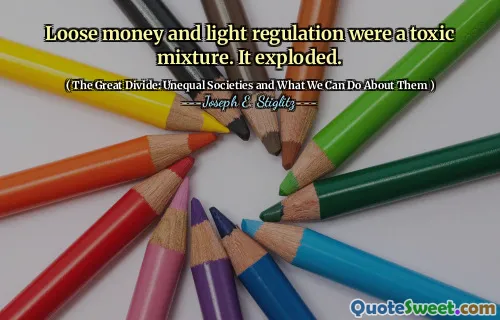Borrowers were told not to worry about paying the ever-mounting debt, because house prices would keep rising and they could refinance, taking out some of the capital gains to buy a car or pay for a vacation.
In "The Great Divide," Joseph E. Stiglitz discusses how borrowers were reassured about their increasing debt levels by the belief that housing prices would continuously rise. This optimistic perspective led many individuals to feel secure in their financial situations, thinking they could refinance their loans and access the value they've built in their homes to fund other expenses, like vacations or new cars.
Stiglitz highlights the dangers of this mindset, implying that such reliance on perpetual economic growth can create vulnerabilities. As borrowers stretched their finances under the assumption that home values would never decline, they became susceptible to financial crises when the housing market changed, emphasizing the broader implications of inequality and the need for more sustainable financial practices.






